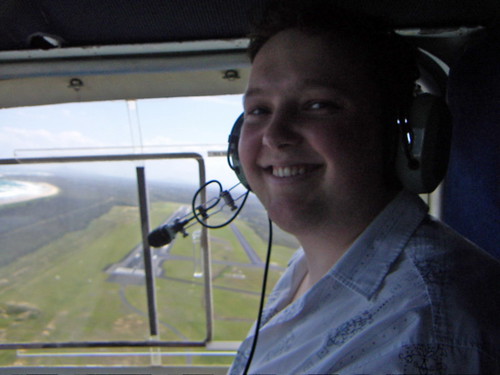Use of Computer Generated Imagery
I was watching television the other day and I realised a startling fact, that most of the commercial content and an increasing quantity of program content is generated on a computer somewhere. In the past any titles were basic. Just a plain clear font maybe with a background. But now the title whirl in from the side with a dynamic background that looks like it took some multimedia person the better part of a week to generate.
It is pretty obvious that the massive increase in computer power coupled with the drop in price for high end computer hardware and software is the catalyst for the shift into computer generated imagery. I think one of the best examples of computer generated imagery use in television today would have to be the cricket. It was only a few years ago that the use of cricket in graphics consisted of the running score in the corner in white Arial font, basic layouts for team stats and slow motion replays. Now with computer help there is a virtual myriad of different generated imagery that can be used.
This imagery includes a generated 3D view of the ball bowled and its intended course, the ability to perform a very slow motion replay, a 3D view of where each ball has been hit and the many 3D effects with motion textures used on the titling. The titling itself is a marvel of technology as any number of statistics relating to anything can be displayed in seconds of it being requested. The use of computers to create imagery has also allowed the use of countless hours of archive footage to be used at the touch of a button, cross referenced and played back off digital storage.
A byproduct of the use of computer imagery is the demand for people with the necessary computer and broadcast skills. This has created jobs that are not able to be filled by many of the people with the traditional broadcast skills. The average viewer demands that as the technology advances so too must the television experience. With rising competition from the internet, television must offer a better viewing experience and the use of computer generated imagery plays a large part in this.
I have come to the conclusion that the use of digital imagery will not lessen over time but become more integrated into the processes that put television to air. People with strong computer skills and the ability the create multimedia content will be in more demand as this happens. Personally I believe the young people entering the broadcast market are placed well in this regard as most are very computer literate and are use to rapid changes in technology.
It is pretty obvious that the massive increase in computer power coupled with the drop in price for high end computer hardware and software is the catalyst for the shift into computer generated imagery. I think one of the best examples of computer generated imagery use in television today would have to be the cricket. It was only a few years ago that the use of cricket in graphics consisted of the running score in the corner in white Arial font, basic layouts for team stats and slow motion replays. Now with computer help there is a virtual myriad of different generated imagery that can be used.
This imagery includes a generated 3D view of the ball bowled and its intended course, the ability to perform a very slow motion replay, a 3D view of where each ball has been hit and the many 3D effects with motion textures used on the titling. The titling itself is a marvel of technology as any number of statistics relating to anything can be displayed in seconds of it being requested. The use of computers to create imagery has also allowed the use of countless hours of archive footage to be used at the touch of a button, cross referenced and played back off digital storage.
A byproduct of the use of computer imagery is the demand for people with the necessary computer and broadcast skills. This has created jobs that are not able to be filled by many of the people with the traditional broadcast skills. The average viewer demands that as the technology advances so too must the television experience. With rising competition from the internet, television must offer a better viewing experience and the use of computer generated imagery plays a large part in this.
I have come to the conclusion that the use of digital imagery will not lessen over time but become more integrated into the processes that put television to air. People with strong computer skills and the ability the create multimedia content will be in more demand as this happens. Personally I believe the young people entering the broadcast market are placed well in this regard as most are very computer literate and are use to rapid changes in technology.

